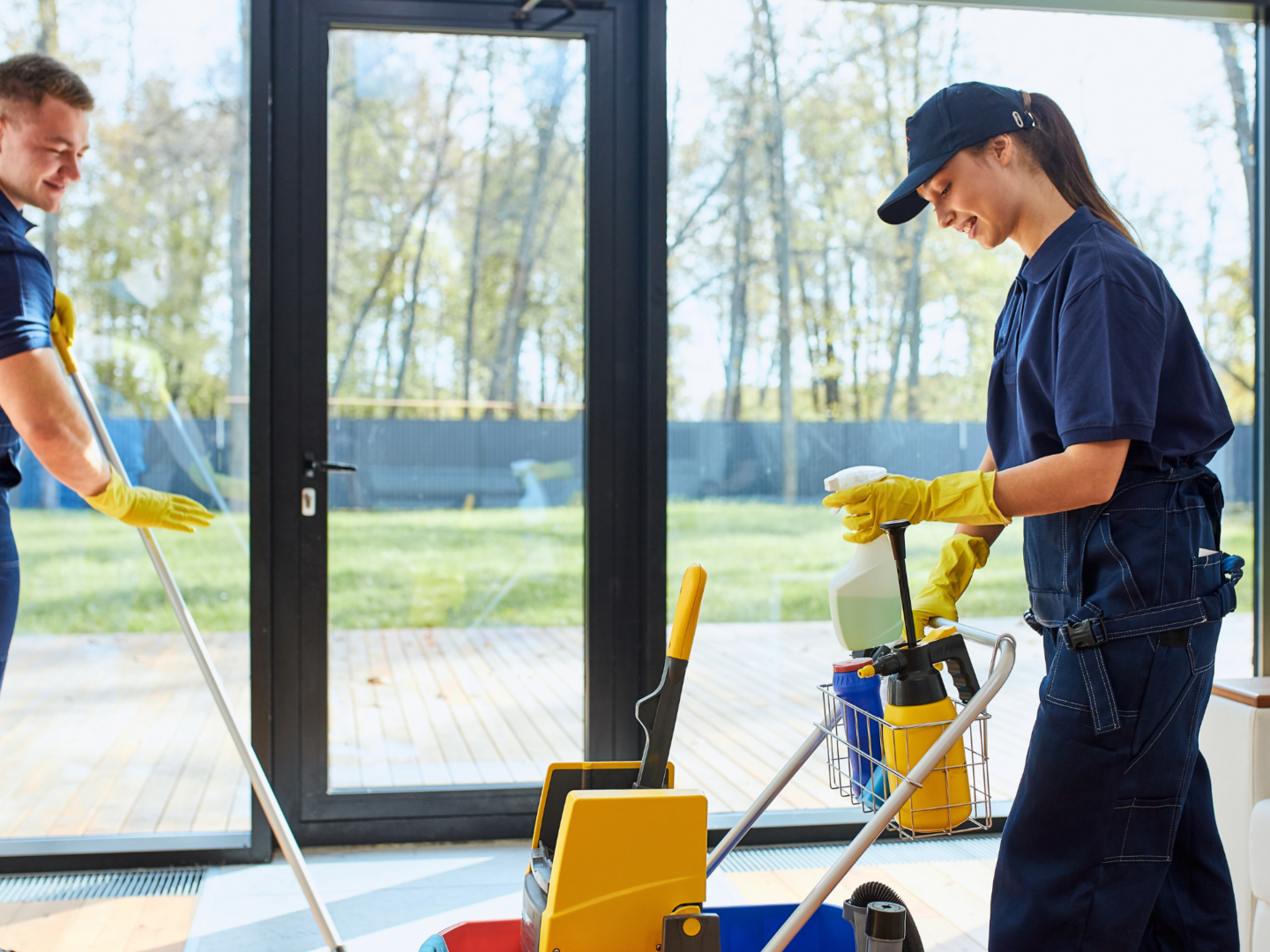Cleaners are an integral part of workplace safety, but they have a unique profession where they constantly operate in potentially dangerous environments. Unfortunately, these risks are often underestimated, and in most instances, cleaners work alone in empty offices with very little support when they encounter potential hazards.
Although the Health & Safety Executive (HSE) reports 3,000 serious accidents involving cleaners each year, the actual number may be much higher due to underreporting, particularly because many cleaners work alone.
So, how can we make sure cleaners are protected and have the tools and resources to complete their work safely?
At SafeWorkforce we help cleaning businesses with their health and safety management by creating and reviewing tailored health and safety documentation and provide support implementing safe working practices for their workers.
Our experts have answered the most common health and safety questions relating to cleaners.
What are the key health and safety regulations for cleaners in the UK?
- Health and Safety at Work etc. Act 1974 (HSWA): General duties to ensure health, safety, and welfare at work.
- Control of Substances Hazardous to Health (COSHH) Regulations 2002: Requirements for handling hazardous substances safely.
- Manual Handling Operations Regulations 1992: Guidelines to prevent injuries from lifting, carrying, and moving loads.
- Personal Protective Equipment (PPE) at Work Regulations 1992: Provision and use of suitable PPE.
- Workplace (Health, Safety, and Welfare) Regulations 1992: Requirements for maintaining safe and healthy work environments.
What personal protective equipment (PPE) is required for cleaners?
- Gloves (e.g., rubber, latex, or nitrile)
- Aprons or coveralls
- Eye protection (goggles or safety glasses)
- Masks or respirators (especially when dealing with hazardous substances)
- Non-slip footwear
How should hazardous substances be handled and stored?
- Identification: Recognise and label all hazardous substances.
- COSHH Assessment: Conduct a risk assessment to identify potential hazards and control measures.
- Storage: Store chemicals in clearly labelled containers and in accordance with manufacturer instructions, usually in a well-ventilated area.
- Usage: Use appropriate PPE and follow safe handling procedures. Ensure that Safety Data Sheets (SDS) are available and understood by all staff.
What are the common health risks for cleaners?
- Musculoskeletal injuries from repetitive tasks and manual handling.
- Respiratory problems from exposure to dust and chemicals.
- Skin irritation or allergies from cleaning agents.
- Slips, trips, and falls on wet or uneven surfaces.
- Stress and fatigue from long hours or inadequate breaks.
Click here to read some frequently asked questions about manual handling.
How can cleaners prevent musculoskeletal injuries?
- Training: Provide training on safe lifting techniques and ergonomic practices.
- Equipment: Use tools like trolleys, adjustable mops, and vacuum cleaners to reduce strain.
- Work environment: Ensure work areas are well-organised and clutter-free.
- Breaks: Encourage regular breaks and task rotation to avoid repetitive strain.
What should be included in health and safety training for cleaners?
- How to use and identify the correct PPE for each task.
- How to hand and store chemicals.
- What are the correct cleaning techniques to avoid injury.
- What are the emergency procedures and first aid.
- How to recognise and reporting hazards.
- What are the ergonomics and manual handling best practices.
What is the importance of risk assessments in cleaning tasks?
Completing and reviewing risk assessments is an essential part of ensuring your employees are safe. Your risk assessments will help:
- Identify potential hazards associated with cleaning tasks.
- Determine who might be harmed and how.
- Evaluate existing controls and identify any additional measures needed.
- Document findings and review them regularly to ensure they remain effective.
What are the employer’s responsibilities regarding cleaners’ health and safety?
As an employer you are responsible for:
- Provide a safe working environment.
- Conduct risk assessments and implement control measures.
- Offer necessary training and PPE.
- Ensure equipment is safe and well-maintained.
- Monitor health and safety compliance.
- Support employee well-being and address concerns promptly.
How can cleaners maintain good personal hygiene?
- Wash hands thoroughly and regularly, especially after handling chemicals or waste.
- Avoid touching the face, particularly eyes, nose, and mouth, with unwashed hands.
- Clean and disinfect PPE after use.
- Shower and change clothes after completing cleaning tasks, if possible.
How can you reduce the risk of slips, trips and falls in the workplace?
Slip, trips and falls account for 32% of all workplace injuries and are the most common type of non-fatal accident for cleaning staff.
Here are examples of how making simple changes to cleaning practices can reduce the risk of slips, trips and falls.:
Can mopping up a spill increase the risk of slipping?
- Problem: Your cleaner has gotten rid of a small spillage by wet mopping a large area, though the spillage has been cleaned up, there is now a much larger risk of slips. A cleaner might eliminate a small spill by wet mopping a large area. While the spill is addressed, a much larger hazardous wet surface is created.
- Solution: In instances of a small spillage, it can be beneficial to clean up the spillage and dry the area with a paper towel – as opposed to creating a larger unsafe surface with a mop. For minor spills, using a paper towel to clean and dry the area is more effective and safer than wet mopping, which can expand the risky surface area.
Why might a cleaner use the wrong product for cleaning a floor?
- Problem: In one HSE case, there was an abnormally high number of slippages on one floor. The cause? A cleaner had been using washing up liquid on the floor as the substance she was supposed to use was on all the way on the bottom floor. In one HSE case, frequent slippages were traced back to a cleaner using washing-up liquid instead of the proper floor cleaner, simply because it was more accessible.
- Solution: Making sure all essential products are easily accessible – this may mean having them on every floor of a building. Ensure that all necessary cleaning products are easily accessible on every floor, reducing the temptation to use inappropriate substitutes.
Is there an ideal time to mop a floor?
- Problem: Your cleaner has mopped a floor that is part of the main access route to a canteen during a meal time. They have only marked the wet area with a cone and this has caused an accident. Mopping a heavily trafficked area, such as the main route to a canteen during meal times, can be hazardous. Merely placing a wet floor cone is often insufficient to prevent accidents.
- Solution: How busy a walkway is can be an important consideration. It is important the mopped floor has a clear and adequate barrier that is adequate if it needs to be cleaned and is dry mopped as soon as possible. Consider the foot traffic when planning cleaning schedules. Busy walkways should be cleaned during off-peak times with adequate barriers in place, and floors should be dry mopped promptly to minimise wet areas.
Click here to read some frequently asked questions about health and safety.


